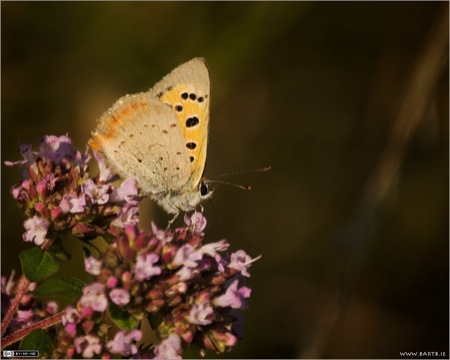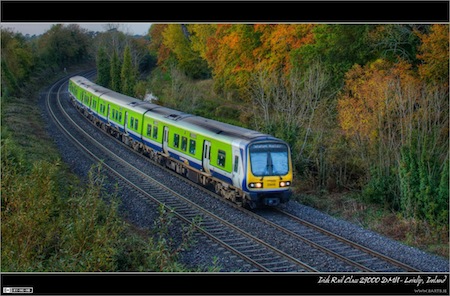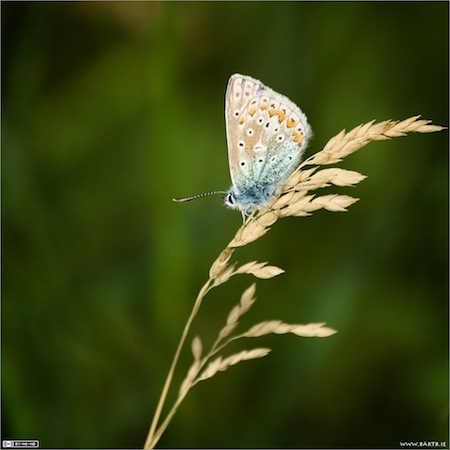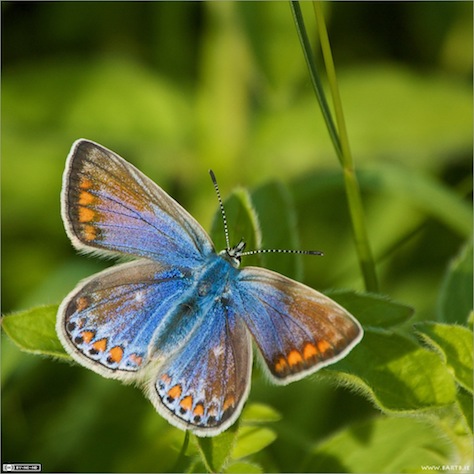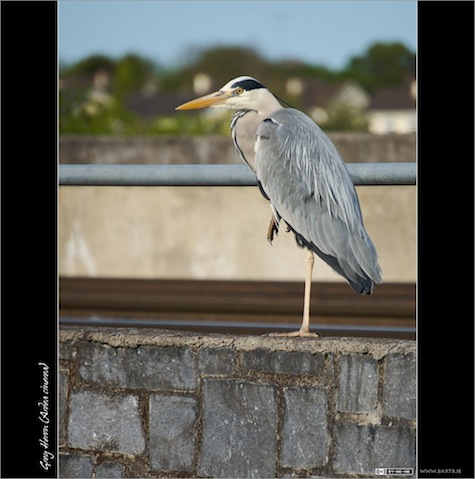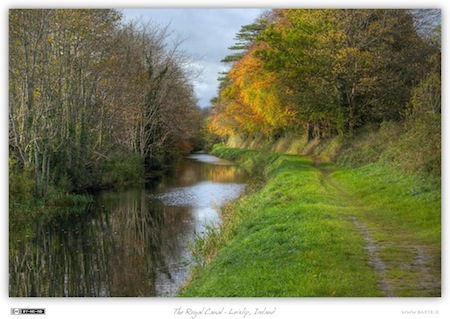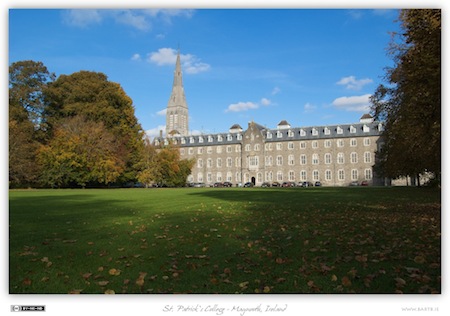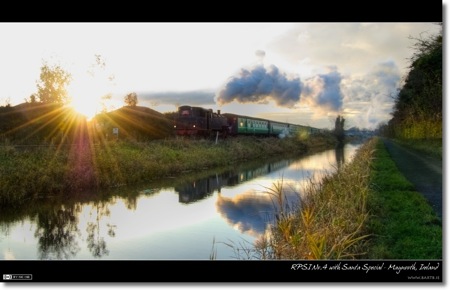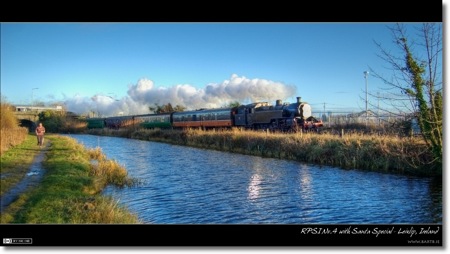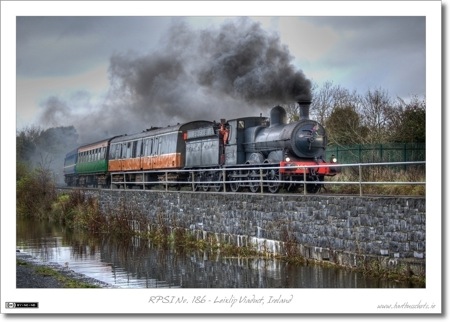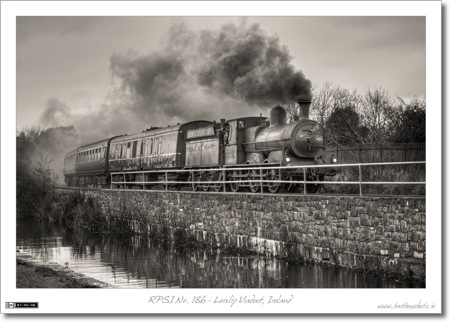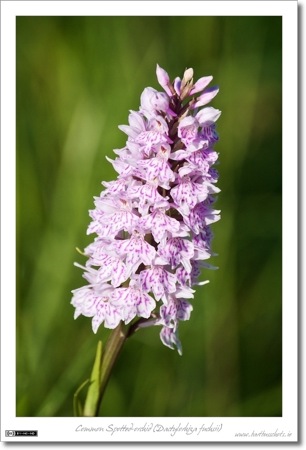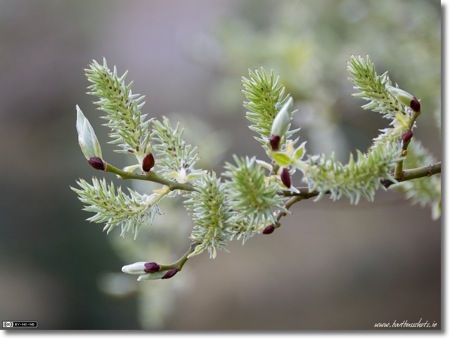Jan
2
Photo of the Week 151 – Small Copper
Filed Under Photography on January 2, 2011 | Comments Off on Photo of the Week 151 – Small Copper
Following on form my recent retrospective on 2010 I thought I’d choose a shot for this week’s Photo of the Week that JUST missed out being included in that retrospective. 2010 was the first year that I managed to get some good shots of the Small Copper butterfly (Lycaena phlaeas) in Ireland. I had gotten a few shots of the species before, but in Belgium rather than Ireland. Obviously I’m delighted to have found a colony of Small Coppers along the Royal Canal, but I’m also really happy with the nice warm evening light I shot this in, and the nice dark un-cluttered background.
- Camera: Nikon D40
- Lens: Nikon DX AFS 55-200mm
- Exposure: 1/1000 sec
- Focal Length: 200mm
- Focal Ratio: f/8
- ISO: 400
- Camera Mode: Aperture Priority
- Exposure Bias: -1.0ev
- Processing: tweaked slightly with Aperture’s built-in Dodge & Burn plugin
Nov
11
Photo of the Week 143 – Autumn Boat Train
Filed Under Photography on November 11, 2010 | 1 Comment
With this long-drawn out illness the past few months I’ve literally missed all the Autumn colour this year. So, since I got no new autumnal pictures this year, I thought I’d share of of my favourites from last year.
Here we see an evening train service from Maynooth to the port in Rosslare as it rounds the fairly sharp turn on the approach to the new Matt Goff Bridge just in Leixlip. This shot has been quite heavily tonemapped to bring out the best of the colours, I have a feeling some people may find the processing a little too extreme, but I like it, and since it’s my photo that’s all that matters 😉
For the train spotters among you, this is an Irish Rail Class 29000 railcar set, number 29018 to be precise. If you have good eyesight you can probably read the number on the front of the train which reads 29418, it will read 29118 on the other side, and the middle two carriages will have the numbers 29218 and 29318, hence the whole unit is referred to as 29018. These units come in blocks of 4, but can be joined together to make larger trains of 8 or even 12 carriages. The 29000s are very much the work horses for Irish Rail’s commuter and local services, though you do sometimes see them on longer national routes too. From a passenger comfort point of view, they’re fine for short services, but I’m not along in groaning when I see one pull up to the platform when I’m travelling InterCity.
- Camera: Nikon D40
- Lens: Nikon DX AFS 18-55mm (D40 kit lens)
- Exposure: 1/200 sec
- Focal Length: 30mm
- Focal Ratio: f/3.5
- ISO: 200
- Camera Mode: Full Manual
- Processing: created by tonemapping a single RAW image with Photomatix Pro, and then tweaking the resulting image with Aperture’s built-in Dodge & Burn plugin
Nov
1
Photo of the Week 142 – The Common Blue
Filed Under Photography on November 1, 2010 | 1 Comment
One of my favourite muses this year has been the Common Blue butterfly (Polyommatus icarus). It’s just so beautiful, and this was a good year for them in Ireland. The summer’s long gone now, but it comes back to me vividly when I look at this shot.
This is definitely one of my favourite shots of the Common Blue from this year. In many ways this is very clichéd shot, these guys love sitting on grass seed stalks, so you see loads of shots of them in this pose. However, this ones stands out to me because of the wonderful soft evening light, and the strong contrast between the butterfly and the background. This was possible because this guy was friendly enough to sit on a grass stalk that was in sunlight, while the background behind it was in shade.
- Camera: Nikon D40
- Lens: Nikon DX AFS 55-200mm
- Exposure: 1/400 sec
- Focal Length: 200mm
- Focal Ratio: f/8
- ISO: 400
- Camera Mode: Aperture Priority
- Exposure Bias: -0.7ev
Jul
18
Photo of the Week 126 – Female Common Blue Butterfly
Filed Under Photography on July 18, 2010 | 2 Comments
I have quite a few good butterfly shots in reserve for future Photo of the Week posts, but I want to keep things nice and varied, so I’m only going to be posting one every few weeks. Since it’s been over a month since I shared a butterfly shot, I figure it might be time to share another.
This is a shot that I had been chasing for over a year when I finally managed to captured it last month. The Common Blue butterfly (Polyommatus icarus) is very small, and very camera shy, but also very beautiful. The male’s back is plain electric blue, which is pretty spectacular, but the female takes things to a whole new level, having a beautiful mix of browns, blues, and oranges on her back. The patterns at the tips of her wings are both intricate and beautiful. Many people consider this the most colourful Irish butterfly, though I disagree, I think that honour should go to the Peacock Butterfly. Regardless of whether or not it’s the most colourful butterfly, it’s certainly one of the most beautiful.
The best chance you’ll get to capture the back of these fine lady’s wings is in the evening time. As the wind falls and the sun gets low in the sky, you’ll sometimes find them sun-bathing on top of tall stalks of grass or wild flowers like thistles with their wings open. If you approach very slowly and very carefully with a long enough lens you have a chance of getting off a good shot. I took this one on a beautiful still and clear summer evening along the banks of the Royal Canal near Deey Bridge and the 13th lock with my 55-200mm zoom zoomed in all the way to 200mm.
- Camera: Nikon D40
- Lens: Nikon DX AFS 55-200mm
- Exposure: 1/400 sec
- Focal Length: 200mm
- Focal Ratio: f/8
- ISO: 400
- Camera Mode: Aperture Priority
- Exposure Bias: -0.7ev
- Processing: This shot was tweaked a little using Aperture’s Dodge & Burn plugin to selectively add brightness, contrast, and saturation to the butterly
Jul
4
Photo of the Week 124 – Grey Heron
Filed Under Photography on July 4, 2010 | 2 Comments
In my mind the most beautiful bird we have in Ireland is the Grey Heron (Ardea cinerea). Others may disagree, but I’ve always loved these big, elegant, but rather skittish birds. Because they’re so easily frightened even a 200mm zoom often isn’t enough to get a great shot, but sometimes you get lucky, and you run into one that’s a little braver than most, and you can get a good shot without the cannon-sized lenses the Scott Bournes of this world use.
In Leixlip there’s a massive viaduct that takes the Royal Canal, its towpath and the Dublin to Sligo railway line across the river Rye and its rather large valley. This heron was sitting on the wall separating the railway from the canal on the viaduct, and he didn’t fly away even when I got right to the edge of the canal on the towpath. I was still a good 5 meters away, but I don’t usually manage to get even nearly this close.
- Camera: Nikon D40
- Lens: Nikon DX AFS 55-200mm
- Exposure: 1/800 sec
- Focal Length: 200mm
- Focal Ratio: f/5.6
- ISO: 200
- Camera Mode: Aperture Priority
Apr
18
Photo of the Week 112 & 113 – Remembering Autumn
Filed Under Photography on April 18, 2010 | 2 Comments
I’m playing catch-up again this week with another double post – I’m not doing too well the last while to keep these on schedule. Anyhow, as usual for a double post, I’ve chosen two photos that share a theme – last Autumn in this case.
The first shot is taken along one of my favorite sections of the Royal Canal, between Deey and Pike Bridges on the stretch from Leixlip to Maynooth. This is one of the sections where the towpath hasn’t been surfaced, even with gravel, and where the canal is lined with trees. It’s a really lovely stretch of nature for walking or cycling along.
- Camera: Nikon D40
- Lens: Nikon DX AFS 18-55mm (D40 kit lens)
- Exposure: 1/160 sec
- Focal Length: 18mm
- Focal Ratio: f/8
- ISO: 200
- Camera Mode: Aperture Priority
- Exposure Bias: +0.3ev.
The second shot was taken on the grounds of St. Patrick’s College in Maynooth as Autumn was just starting.
- Camera: Nikon D40
- Lens: Nikon DX AFS 18-55mm (D40 kit lens)
- Exposure: 1/200 sec
- Focal Length: 18mm
- Focal Ratio: f/11
- ISO: 200
- Camera Mode: Aperture Priority
- Exposure Bias: +0.7ev.
Feb
7
Photo of the Week 102 & 103 – 2009 RPSI Santa Specials
Filed Under Photography on February 7, 2010 | 1 Comment
Each December the Railways Preservation Society of Ireland (RPSI) run a series of special excursions called Santa Specials. The trains run from Dublin’s Pearse Station to Maynooth and back, and are usually pulled by Steam Locomotive No.4. For three weekends in December there are up to three trips a day on Saturdays and Sundays, so lots of fantastic opportunities to get some shots of steam in action on Irish rails. This year there was a slight hitch on one of the days though, No.4 broke down on the last run on one of the Saturdays, so a Northern Irish Rail diesel loco had to fill in for the runs on the following Sunday, but by the next Saturday No.4 was back in action and was able to finish out the rest of the runs.
Since I missed posting a photo last week this is a double week, and I’ve chosen my two very favourite shots from last December’s season of Santa Specials. I have to say I really found it hard to pick just two, I’m really happy with quite a few of my shots from the month. If you want to see more than just these two shots I’ve created a set on Flickr with my best shots.
So, on to the first shot, in this case we see No.4 leaving gathering speed as it leaves Maynooth on the return leg back to Dublin Pearse. One thing you’ll note here is that the train appears to be going backwards, or “bunker first”. This is true, except it was designed to run just as well in both directions, so arguably there is no such thing as backwards. It’s this ability to run in either direction that made No.4 such a useful engine during it’s working life, because it could run to stations that didn’t have turntables for turning engines around. In the past all major stations had to have turntables, but very few of those now remain, and Maynooth never even had one because it only became an important station in the 1980s when it became the terminus for the new Western Commuter service out of Dublin.
- Camera: Nikon D40
- Lens: Nikon DX AFS 18-55mm (D40 kit lens)
- Exposure: 1/30 sec
- Focal Length: 18mm
- Focal Ratio: f/11
- ISO: 200
- Camera Mode: Shutter Priority
- Processing: This shot was generated by tonemapping the original RAW file with Photomatix Pro, and then using layer masks in Pixelmator to selectively blend it with the original to merge the best elements from both versions of the shot into the final image.
The second shot I chose shows No.4 on it’s way out to Maynooth running forwards. In this case the shot was taken in Leixlip just outside Leixlip-Louisa-Bridge station. This was No.4’s second run of the day, and this run had the best weather of any of this season’s runs.
- Camera: Nikon D40
- Lens: Nikon DX AFS 18-55mm (D40 kit lens)
- Exposure: 1/800 sec
- Focal Length: 18mm
- Focal Ratio: f/3.5
- ISO: 200
- Camera Mode: Aperture Priority
- Exposure Bias: -1.0ev
- Processing: This shot was generated by tonemapping the original RAW file with Photomatix Pro.
Nov
8
Photo of the Week 89 & 90 – Steam Loco No. 186
Filed Under Photography on November 8, 2009 | 4 Comments
Since I was ill last weekend I’m doing a double-post this weekend. In this case, it’s actually the same shot post-processed in two different ways.
Both shots are of the steam locomotive No. 186 which started it’s life as a mainline locomotive for Ireland’s Great Southern & Western Railway (GS&WR or just GSWR). No. 186 is now lovingly maintained by the Railway Preservation Society of Ireland (RPSI), and gets to stretch it’s legs on various Irish Rail mainlines on steam specials. This shot was taken when No. 186 was pulling the Ghost Train steam special from Dublin Connolly to Mullingar and back to Dublin Connolly. Here we see No. 186 crossing the Leixlip Viaduct on her way out to Mullingar in the morning. You can read more about No. 186 on the RPSI’s Website.
Normally when I tone-map shots I like to keep them looking natural, but in this case I really liked the result of pushing things a little further. The result is still quite natural, but yet also somewhat hyper-real.
The second version uses the first as the base for the conversion to monochrome. Because black and white shots tend to pick up a lot of texture anyway, the hyper-real look of the first version is completely lost in the second. We’re used to Sepia tone shots having this level of texture and detail in them.
You can see all my photos from this steam special in this Flickr Set.
- Camera: Nikon D40
- Lens: Nikon DX AFS 55-200mm
- Exposure: 1/320 sec
- Focal Length: 55mm
- Focal Ratio: f/4.5
- ISO: 400
- Camera Mode: Aperture Priority
- Processing (Version 1): Started by tonemapping a single RAW image in Photomatix Pro, then selectively tweaked the exposure, contrast, and saturation using the Dodge & Burn plugin in Aperture.
- Processing (Version 2): Took the veresion described above as the starting point, then converted to monochrome using the Channel Mixer brick in Apeture, then added a subtle Sepia Tone using the Colour Monochrome brick.
Oct
26
Photo of the Week 88 – A Common Spotted Orchid
Filed Under Photography on October 26, 2009 | 2 Comments
A few weeks ago I chose my favourite butterfly shot of the year, this week I’m choosing my favourite wild flower shot of the year. This was a really hard choice because I really got to grips with my Nikkor 55-200mm zoom lens this year, so there were a lot of decent flower shots to choose from. However, in the end, this shot won, in no small part because of how pretty a flower it is! I just love wild Orchids, and always have. When you stumble across one you feel like you’ve found a little treasure! In this case the Orchid is a Common Spotted-orchid (Dactylorhiza fuchsii). I’m not sure the name really suits the flower, ‘common’ implies abundant to me, and that doesn’t seem to tally with reality.
I managed to find a marshy field with quite a few of these beauties near Leixlip Louisa Bridge train station, and after much searching I found one that was blemish-free and standing out on its own enough to get a nice soft un-cluttered bokeh. The light was also pretty much perfect as I shot it in the early evening.
What I really love about this shot is that I had almost noting to do in post – it came out of the camera almost exactly like this! I Just did a few very minor tweaks in Aperture to get the crop just as I wanted it, and to pop the colour and the contrast just a little bit.
- Camera: Nikon D40
- Lens: Nikon DX AFS 55-200mm
- Exposure: 1/640 sec
- Focal Length: 200mm
- Focal Ratio: f/11
- ISO: 400
- Camera Mode: Aperture Priority
- Exposure Bias: -0.3ev
Sep
20
Photo of the Week 83 – Grey Willow in Spring
Filed Under Photography on September 20, 2009 | Leave a Comment
This is one of my favourite photos of the whole year so far. To me it says Spring better than anything else I’ve ever shot. It’s the first leaves starting to sprout on a Grey Willow (Salix cinerea) tree growing along the banks of the Royal Canal at Deey Bridge between Maynooth and Leixlip.
- Camera: Nikon D40
- Lens: Nikon DX AFS 55-200mm
- Exposure: 1/250 sec
- Focal Length: 80mm
- Focal Ratio: f/5
- ISO: 400
- Camera Mode: Aperture Priority







